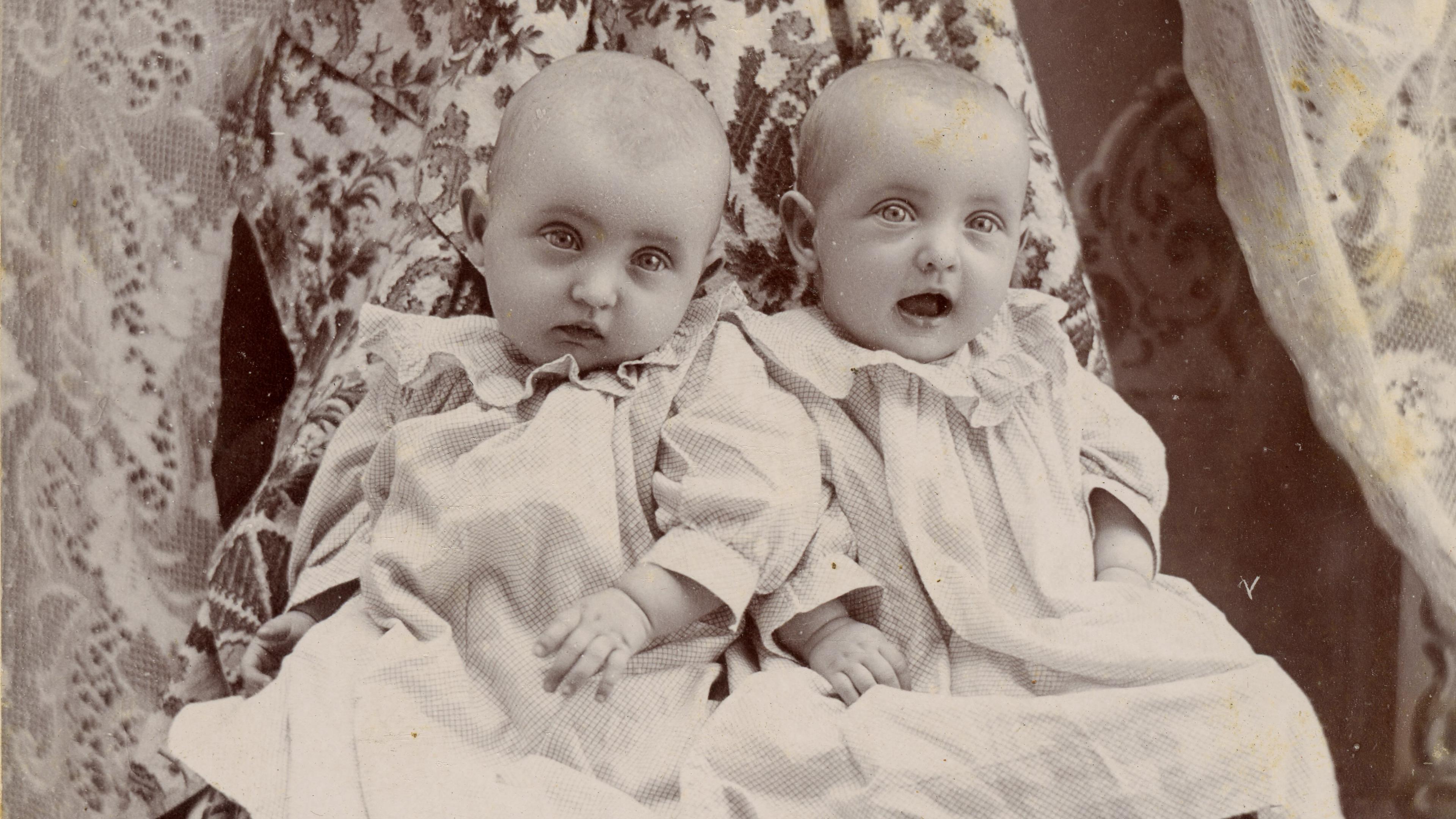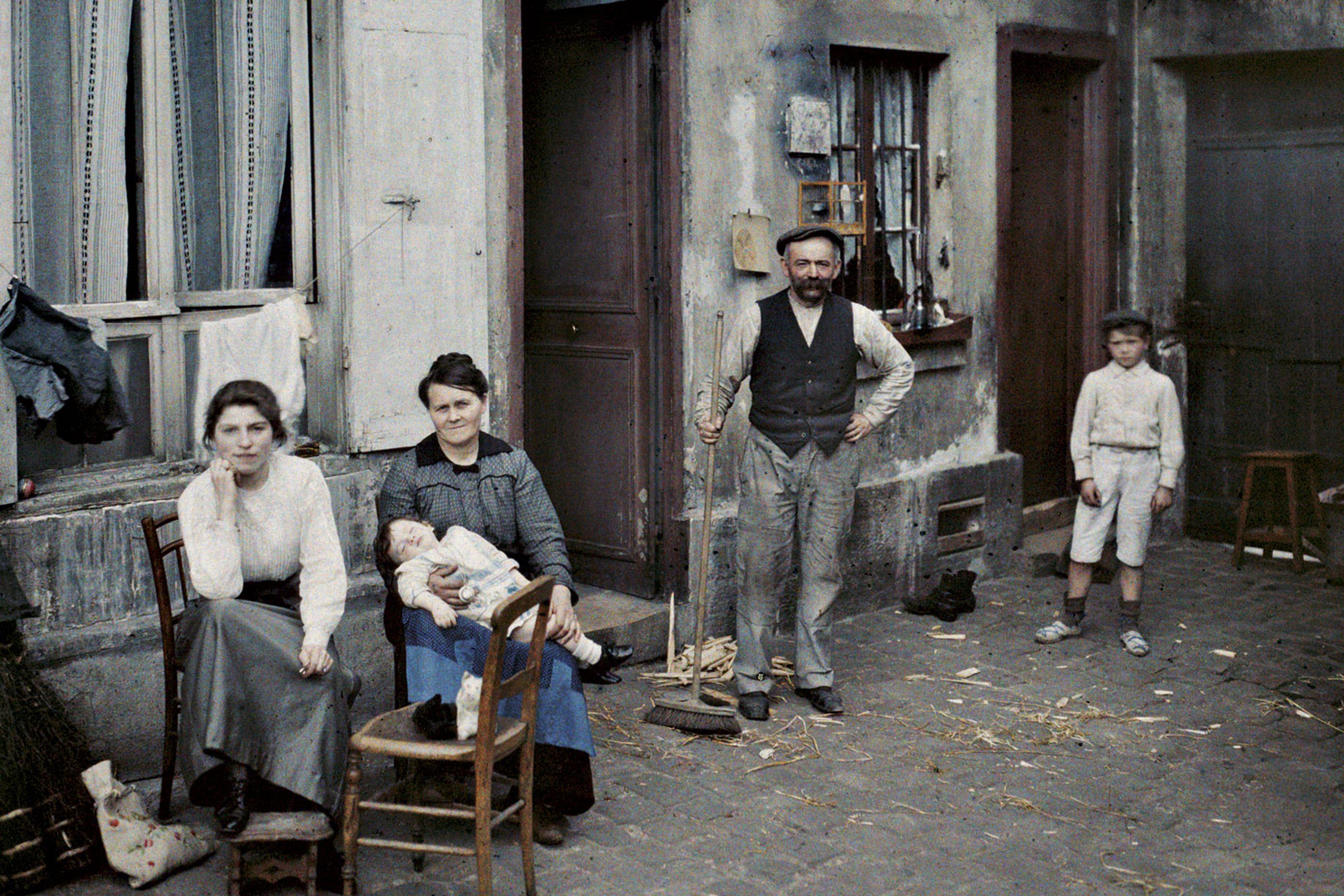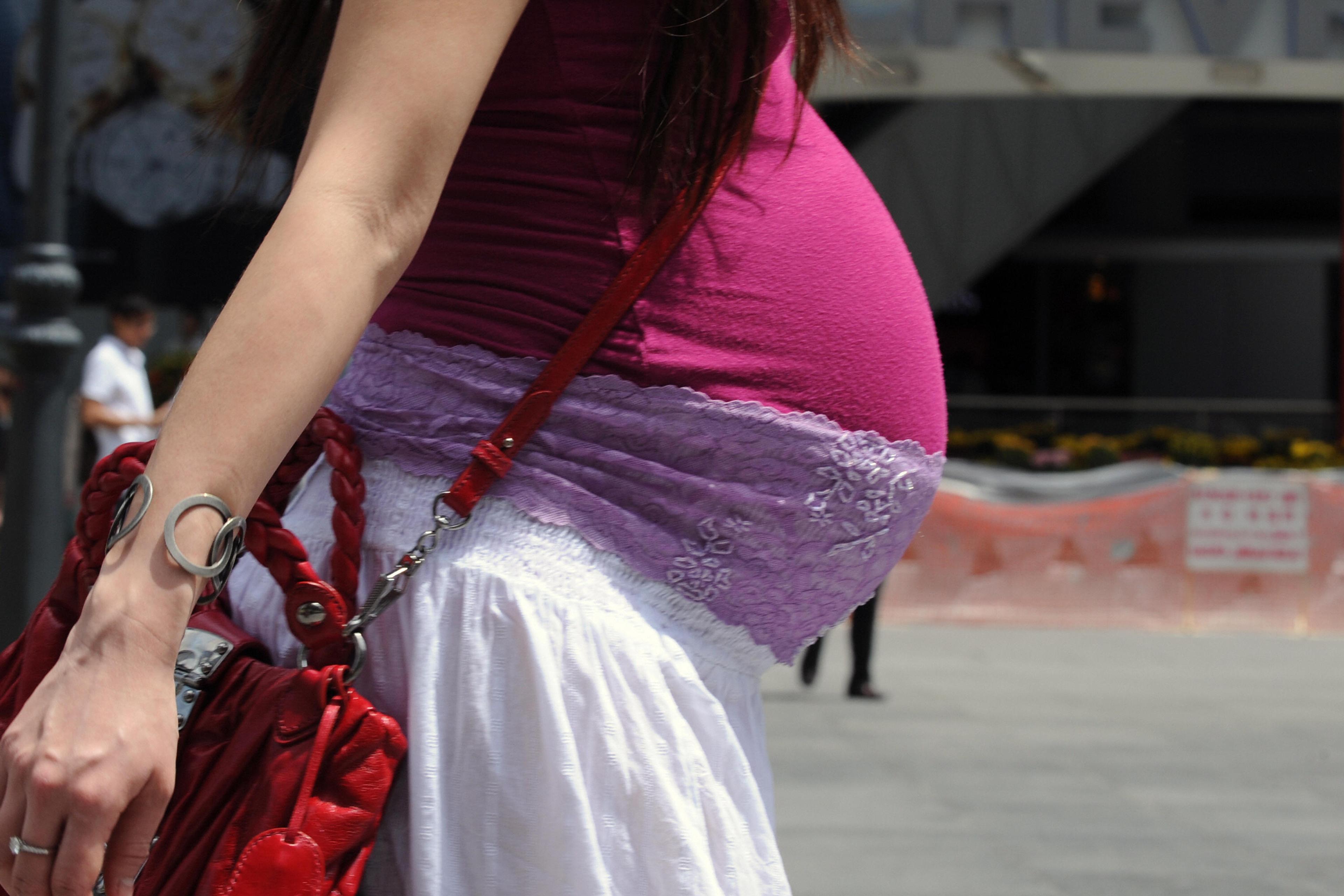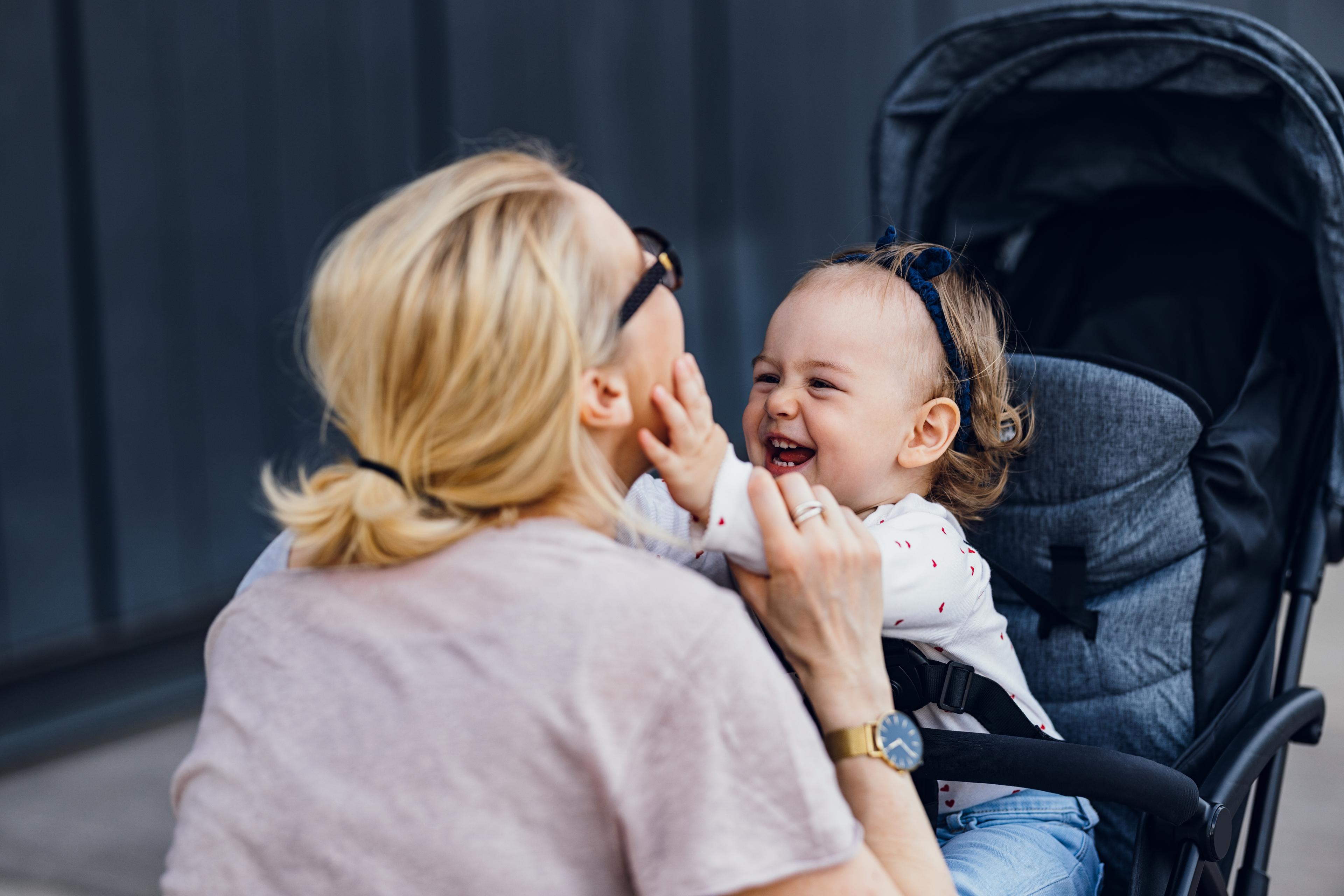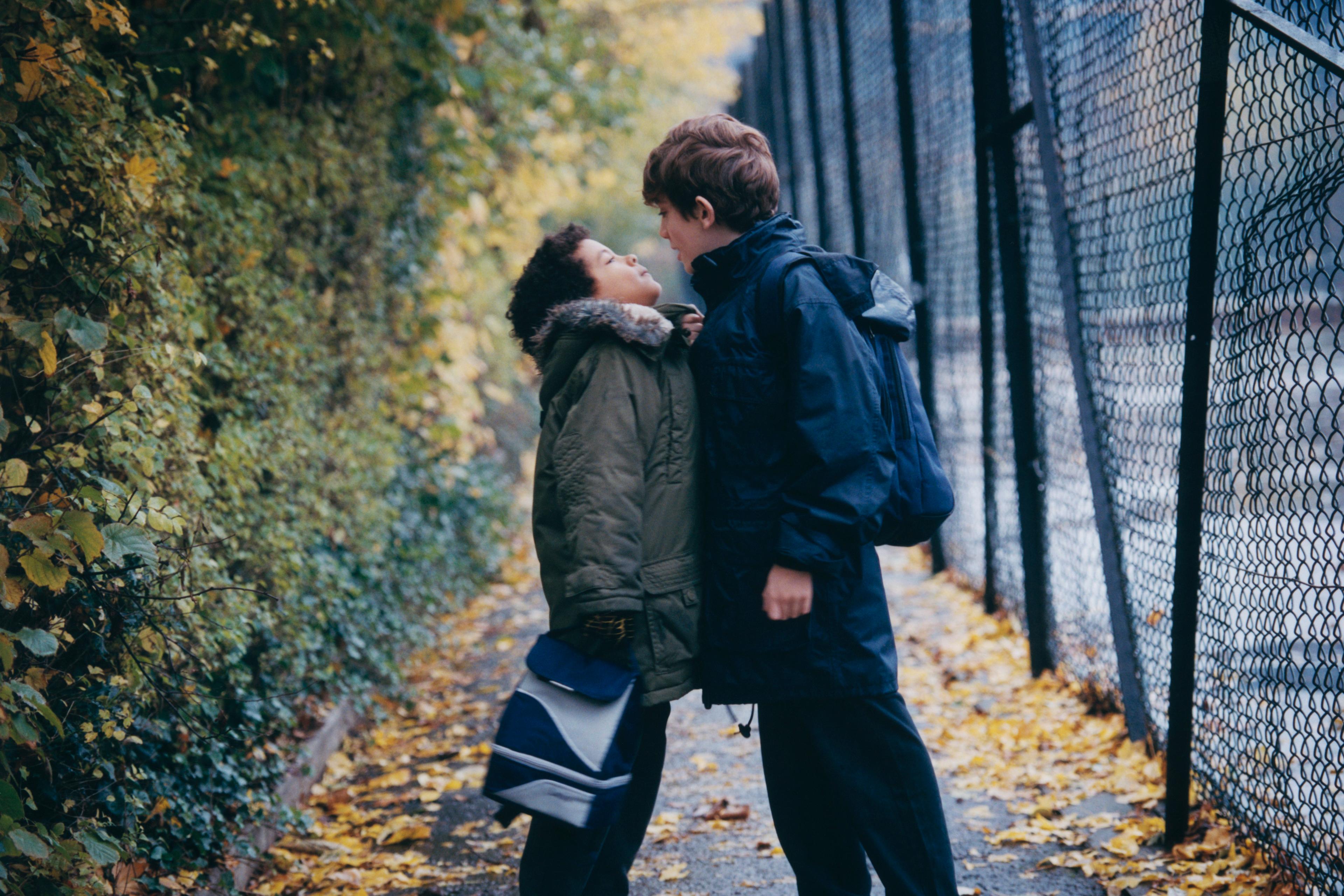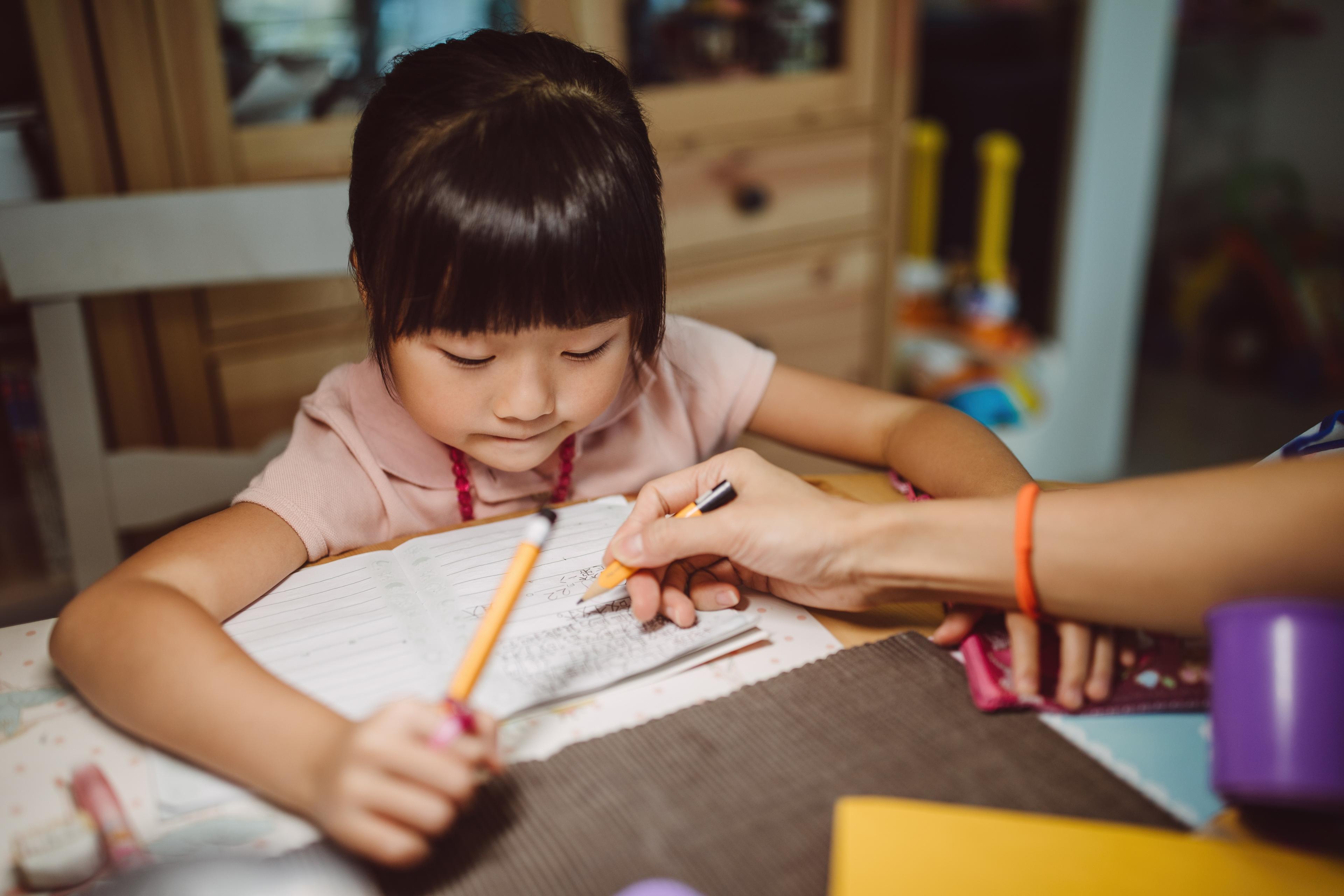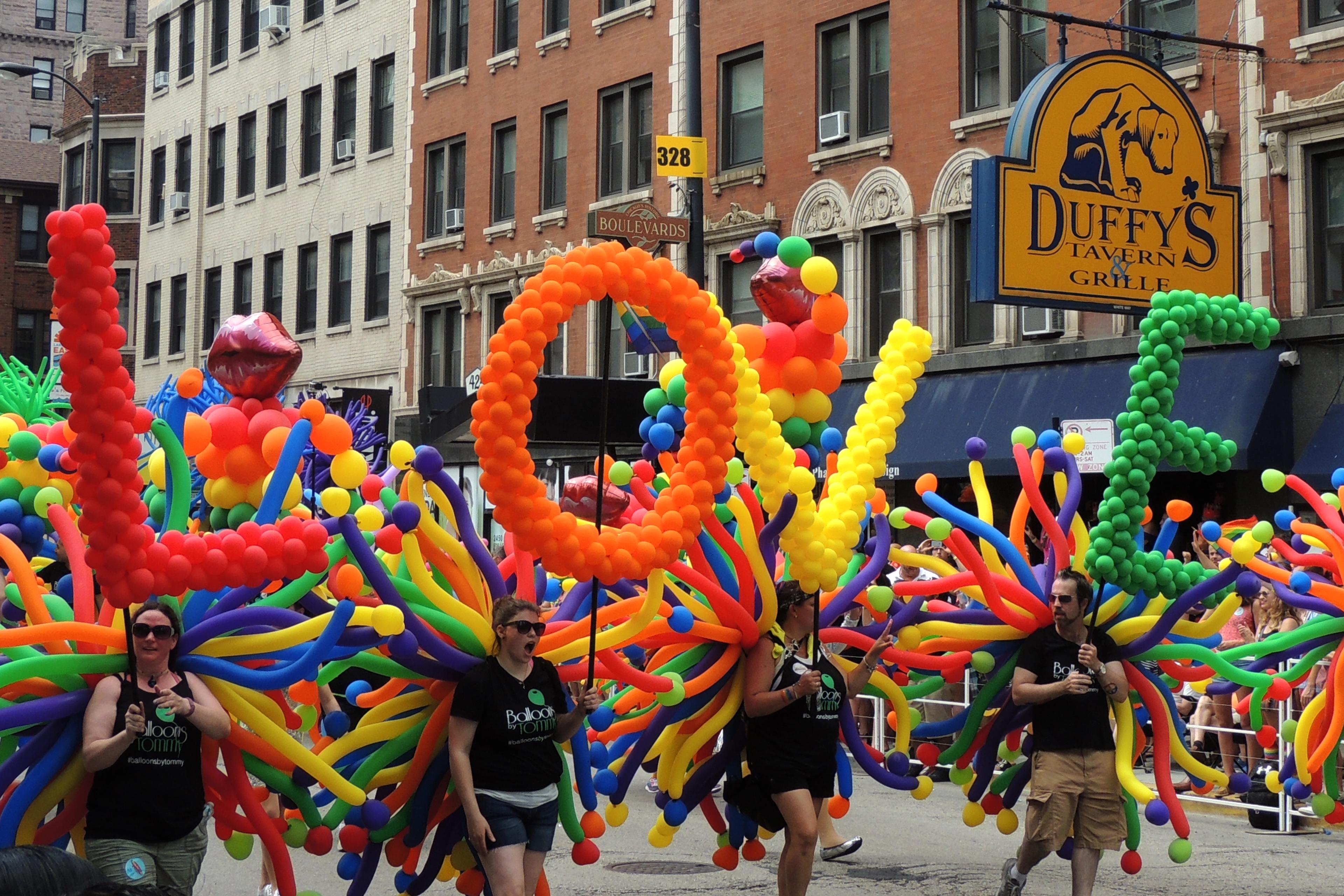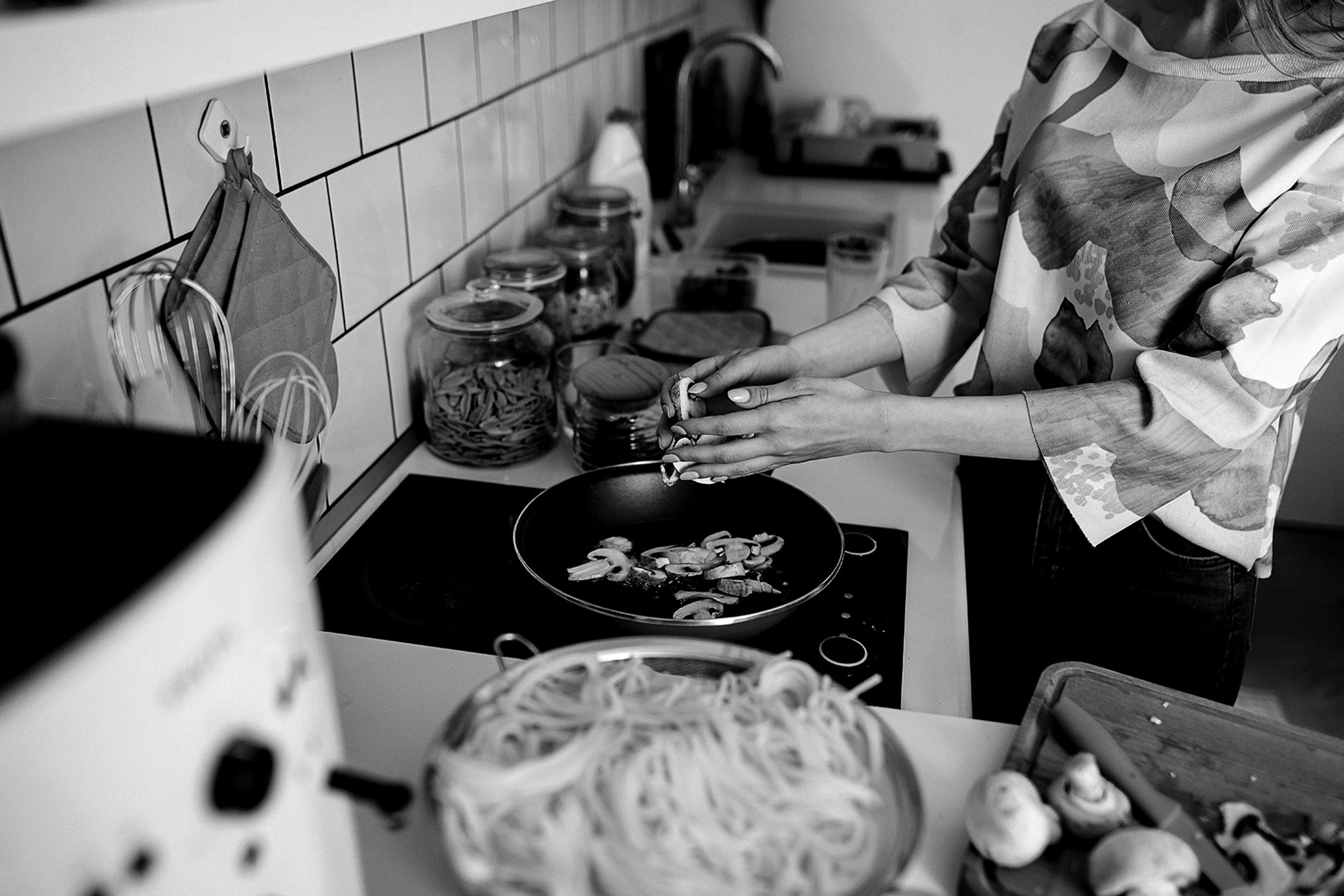We have all seen portraits of very young children posed on tousled blankets and propped up comfortably among decorative pillows. It is an aesthetic choice that has its roots in a Victorian necessity. In the early days of photography, long exposure times meant that somebody needed to hold squirmy children still, and the attractively draped textiles and cushions on which they sat or lay conveniently covered the secure arms and familiar laps of the children’s mothers. These ‘hidden mothers’ are easy to miss in pictures – yet, as soon as you spot them, it becomes impossible to unsee the head and shoulders, knees and legs of the adults beneath the brocade. And once you can no longer ignore her, you cannot believe you ever did not register that, of course, the infants are ensconced on their mother’s lap.
-ia-0214-1612.jpg?width=3840&quality=75&format=auto)
Leora and Leota Lamb, twins from Fountain City, Indiana, on their mother’s lap, 1897. Image courtesy of the Indiana Album
Such pictures were surprisingly common. Linda Fregni Nadler’s exhibition The Hidden Mother, held at the Venice Biennale in 2013, was the first large-scale public display of these images; it included nearly 1,000 photographs, mostly taken in European studios. It was followed by Laura Larson’s lyric meditation on becoming an adoptive mother, also called Hidden Mother (2017), which was inspired by several private photograph collections in the United States. Together, the two works catalysed a flurry of online responses that turned primarily on our willingness to raise eyebrows at the oddities of the past: How bizarre that people used to toss a piece of tapestry over a mother’s head to hide her from the camera lens! After all, we reasonably think, the need to hold the child does not adequately explain why the mother must be stifled with a rug or made to lurk behind a curtain, instead of being shown in the portrait.
What can this practice tell us about the tensions between maternal tenderness and the documentary potential of the new photographic medium? And, if we turn the lens back on ourselves, to analyse our willingness to fetishise these hidden mothers, what can we learn about the relationship between our assumptions about the past and the contemporary imperatives of motherhood?
If you do not know Nagler’s and Larson’s work, it is nearly impossible to track the original source for any hidden mother portrait found online – a fact both poignant and telling. Images from their books are reproduced endlessly without attribution, as if, collectively, we want these mothers to remain unknown. By unwritten agreement, the photographs are valuable primarily as curiosities of a bygone time, as documentary evidence of a bizarre practice, and as a metaphor for our assumption that Victorian women were routinely rendered invisible. Unable to vote, confined by the cultural ideal that homemaking should appear effortless, and liable to have their paid labour misconstrued as a sign that their bodies could be bought, 19th-century women were erased and silenced in myriad ways, of which these photos seem to be just one more example. But the truth is that, both within broader culture and within these pictures, mothers were ‘not there’ only when people agreed to pretend not to see them.
These photos make literal the expectations placed upon Victorian women: to be manifestly embodied, labouring, supportive beings – holding, cleaning, clothing – and then to still that labour for a picture-perfect moment. Activity is erased by photography, literally blurred out of the picture if a subject moves. The better the mother’s work, the crisper the photograph, the more perfect-looking the child. Paradoxically, the photograph’s stillness is made possible by a mother’s continuous labour, and her labouring body is emphasised by the textiles that drape its contours. Erasing her is therefore a wilful act: a viewer must choose to read this mother as hidden.
Conventional wisdom is that these photographs were meant to be framed behind a cut-out mat (also called a mount or an overlay) to reveal the centred child, while concealing the adult in the margins. In one telling photograph, a mother uses her own skirt as cover for the arm that props up her baby, while the baby steadies himself by placing a chubby hand on her familiar knee. Looking closely, one can see the faint, perfect oval where a now-lost mat produced differential fading on the picture: her hat, bosom and lap would have originally been hidden by the overlay’s periphery.
-IMG_20211117_112128.jpg?width=3840&quality=75&format=auto)
On mother’s knee: untitled, by J M Adams. Image from author’s private collection
Yet many of these photos were not matted and, the more one looks, the more preposterous it seems to dub these as ‘hidden mothers’ photographs. If they are hiding, they are very bad at it. One can see knees and elbows, puffs of sleeves, skirt hems, hairdos, hats. Some of the women crouch behind chairs that barely conceal them, or wear drapery that draws attention to their supporting hands. Swathed in cloth too thin to obscure them, jutting noses or chins hint at human profiles. In the grimmest variation, dark figures in heavy fabric loom behind the child, their mummy-like wrappings suggesting nothing so much as a corpse.
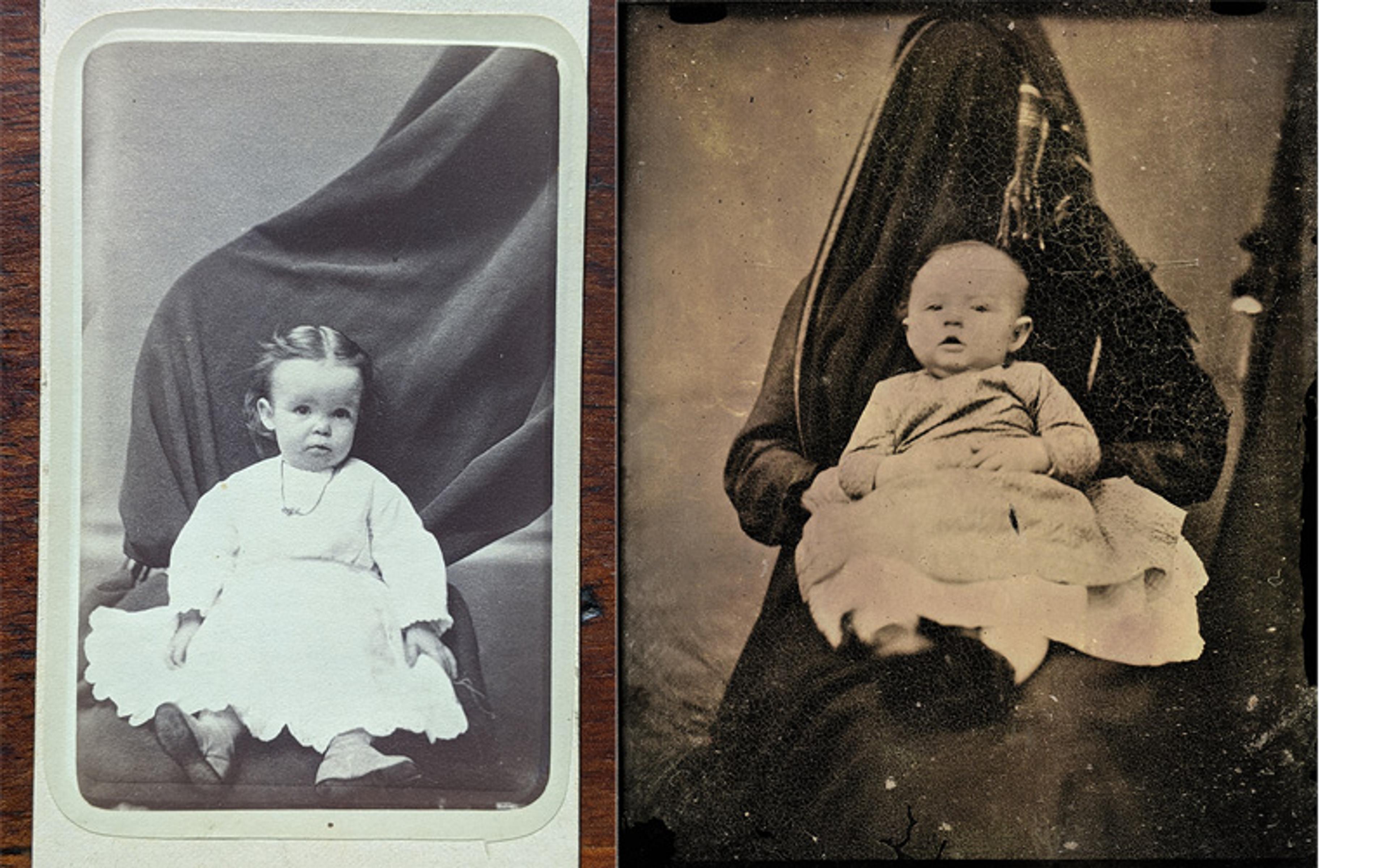
Wreathed in black: untitled by Stephen Piper, left, and an unknown artist, right. Images from the author’s private collection
There are plenty of photographs from the same period of children with smiling mothers, as well as of children alone, which belies the assumption that a half-concealed mother was strictly necessary to hold little ones still. So, what exactly are these shrouded women, these photographs, doing? And why?
Perhaps the supporting lap is obscured because it does not belong to the child’s actual mother? In one photograph, a woman’s hand rests half-hidden under a child’s elaborate white skirt and lace-trimmed petticoats. The infant girl’s pocket-book matches her glossy patent boots; her pink cheeks and gold necklace are tinted for emphasis. Meanwhile, the woman’s serviceable day-dress is a simple sprigged cotton, its skirt trimmed with a haphazard ruffle, a token of machine-made lace on her fichu. The skin of her exposed forearm hints that the cloth over her head is there to conceal that this child is being held by her Black nanny. Such nonchalant decapitation is a vivid reminder of the cultural disregard for the bodies of women of colour who nursed white children. The photographers’ clumsy masking of these caregivers thus reminds us that motherwork is not always the province of biology, nor always a position of privilege.
-SC425090.jpg?width=3840&quality=75&format=auto)
Black nanny: untitled, by an unidentified artist, c1880s. Gift of Lee Marks and John C DePrez, Jr. Courtesy Museum of Fine Arts, Boston
One intriguing possibility is that, at least for some of these women, defying the trope of invisibility was part of the point. It is tempting to imagine that the forearm in the picture above is purposefully exposed: the white sleeve, after all, could easily not have been pushed up. Is it an accidental reveal or a quiet challenge to the bodily indignities that culminate in having a curtain unceremoniously pulled over her head? In either case, the woman’s forearm draws attention to the conditions suggested by that arm’s darkness in contrast to the whiteness of the child’s arms. However it is read, in underlining the physical closeness between the child and mother-figure, such photographs define mothering as an act of embodied connection and reveal that calling a faceless mother ‘hidden’ is a piece of perversity.
Compare this picture with ‘hidden mother’ photographs featuring an intimacy less invisible and more unambiguously that of a mother and child, even as the woman’s face remains obscured. My favourites show a woman reaching in from the margins to touch her little one. Her palm softly cups a temple, or her caressing forefinger lightly brushes behind an ear, or her upturned fingertips graze the hand of a tiny girl who has newly discovered that she can stand. Triangulating mother, child and chair, the arm reaching in from beyond the frame extends support both literal and figurative: you can do this, her fingers say. And the child’s proudly light grasp responds: I think I can, with your help.
-intimate-triptych.jpg?width=3840&quality=75&format=auto)
Intimate triptych: mothers’ hands in frame, arranged in author’s mats. Courtesy the author
These tender pictures are a testament to the fact that babies know their mothers through the medium of touch. Infants in studio portraits are not merely being held still; they are being held up, held safe and habitually reassured.
I matted a few of these photographs myself to draw attention to caresses that Victorian mats might have obscured. Looking at the pictures in their entirety, the mothers’ gestures nearly dissolve into the textures, and the carefully placed masses of light and dark, of the whole. Yet these details are crucial to what the photographs really document: the stability and security of loving attachment.
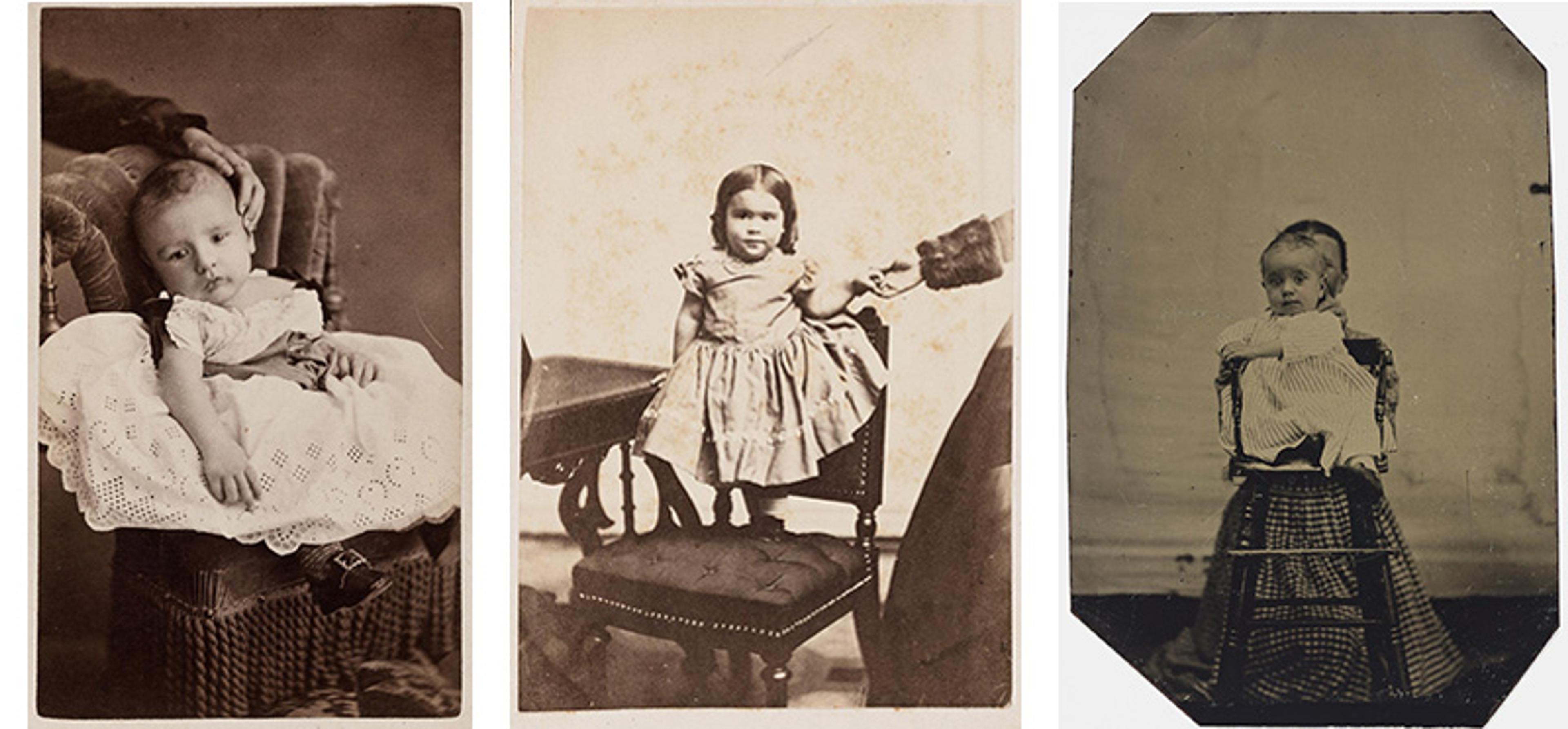
The above images again, without the author’s mats; photography by, left to right, Harvey Roberts Marks, John A Whipple, and an unidentified artist; all 1860-70. Courtesy Museum of Fine Arts, Boston
In sum, hidden mother photographs crystalise the geometry of knowing, and being known. They remind us that mothering is, fundamentally, predicated on the intimacy of bodies. In undeniably attending to their children in these portraits, the mothering figure offers silent resistance to her implied invisibility, and to cultural practices that denied her embodied self. The contours of mothers’ bodies persist in these photos – not just for their children, but for the viewers who must make a huge leap to ‘not see’ what is so obviously there.
We owe it to generations of mothers to resist the narrative that the work of mothering is so easy to erase. We might productively align ourselves with the ‘hidden’ bodies whose intimate connection to children is central to every one of these photographs. At the same time, we must acknowledge that there is something ridiculous – and occasionally even violent – in these efforts at erasure.
My hunch is that we have preferred to embrace the strangeness of these photos in order to resist their uncomfortable trace of the familiar. But if the global COVID-19 pandemic has shown us anything about mothering, it is that Western cultures still expect maternity to remain largely invisible. Mothers have had to simultaneously become teachers’ aids, surrogate friends, athletic coaches and IT experts, on top of their mothering roles, and without breaking down from the strain. The vastly differential effects of pandemic closures on single mothers and low-income mothers have gone largely unremarked. And those working from home have found that the latest image technologies – now, virtual video backgrounds – conspire to hide their untenable circumstances. This time it’s the children who shatter the illusion, persistently intruding into the screen from the margins; toddlers wander in for hugs; teens squabble audibly beyond view as we try to focus on a video meeting. We have not reckoned with how it feels to be complicit in trying to filter out our motherselves from the picture – but the facts of the past 20 months make clear that hidden mother photographs are not a historic oddity but part of a continuous history of pretending that mothering is fundamentally marginal.
Taking a cue from our foremothers, we might explore ways to document our bodies rather than trying to render our work invisible. We might admire the ability of a mother in a large hat to sit in the margin of a photo smiling cryptically as she defies the very convention she ostensibly upholds. We might even, if we could get more consistent sleep, find moments of humour in the absurdity of our situations.
-SC425457.jpg?width=3840&quality=75&format=auto)
Hidden mother: untitled, by an unidentified artist. Courtesy Museum of Fine Arts, Boston
